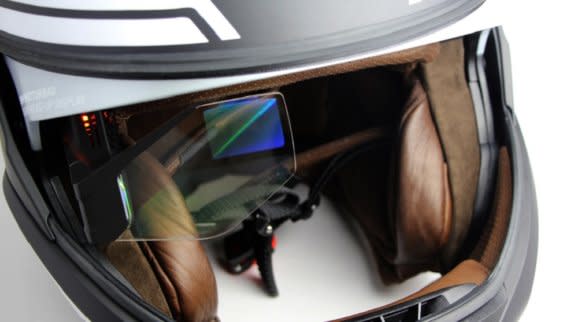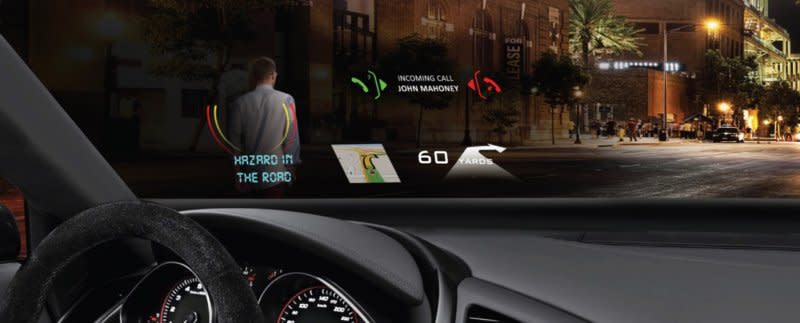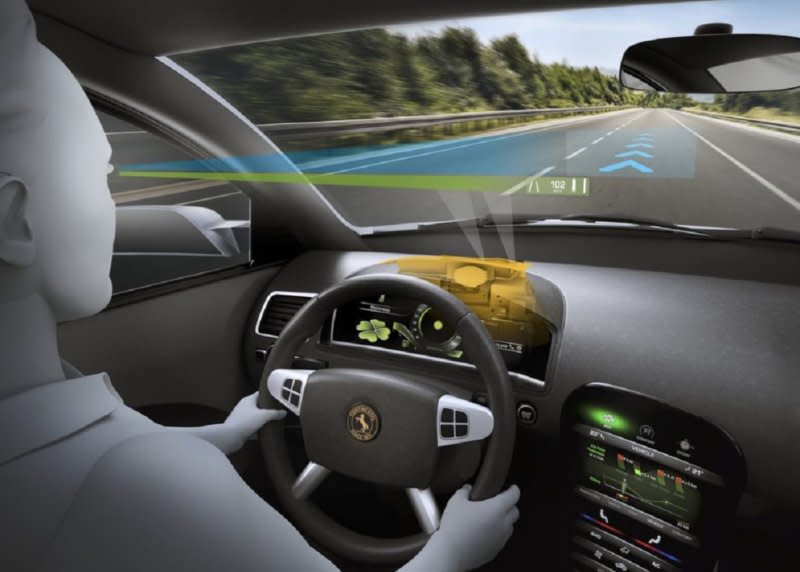DigiLens raises $22 million to make ‘eyeglass-thin’ augmented reality displays

Display technology maker DigiLens has raised $22 million to create better augmented reality and virtual reality products in which digital information lies on top of transparent glass.
The Sunnyvale, California-based company makes diffractive optical waveguide technology and nanomaterials for AR and VR, which could be a $108 billion market by 2021, according to tech advisor Digi-Capital.
DigiLens’ technology can enable “eyeglass-thin” AR heads-up displays for motorcycle helmets, car windshields, VR headsets, aerospace applications such as fighter jets, and AR smartglasses, said Jonathan Waldern, CEO of DigiLens, in an interview with VentureBeat.

Above: DigiLens makes heads-up display technology for cars, such as a new BMW model.
Image Credit: DigiLens
“We enable a massive reduction in size and form factor,” Waldern said. “This funding allows us to expand our scope to focus on the next areas. Today’s science fiction is tomorrow’s science fact.”
Strategic investors include Sony, Foxconn, Continental, and Panasonic, along with venture investors Alsop Louie Partners, Bold Capital, Nautilus Venture Partners, and Dolby Family Ventures. The company plans to use these strategic relationships to bring to market several augmented reality displays and sensors for enterprise, consumer, and transportation applications.
“Data on glass is a term I coined to encompass the utility of mixed reality,” said Gilman Louie, founder and managing director of Alsop Louie Partners and lead investor, in a statement. “We are betting on a variety of AR applications, from stock picking and telepresence to autonomous driving and gaming, all benefiting from DigiLens optics and AR-HUD breakthrough.”

Above: A heads-up display in a car can make you a more alert driver.
Image Credit: DigiLens
The company is eight years old, and it spent about six of those years developing its fundamental technology, Waldern said. It targeted the aerospace and military markets first, and it has generated revenues from its heads-up displays (HUDs) for that market. The big aerospace firm Rockwell Collins is using the DigiLens technology in various projects.
“We bootstrapped ourselves on the military and aerospace business,” Waldern said.
DigiLens is also going into production on automotive HUDs that it showed with BMW last year.
“We believe Augmented reality HUDs will not only enhance driver safety but also accelerate automated driving acceptance by enhancing the drivers’ confidence in what the car actually sees and knows” said Helmut Matschi, executive board member and head of the interior division at Continental. “The large AR-HUD display will help keep drivers safe by putting critical travel information at eye level and allow them to see what the robot car sees.”

Above: DigiLens can enhance a driving experience with a heads-up display.
Image Credit: DigiLens
Waldern said the “key enabler for AR is the optics.” Sony plans to use the DigiLens waveguide optics in an upcoming version of its AR smartglasses. That will help Sony develop lenses with full-color capability and a wider field of view, compared to other smartglasses available today, said Hiroshi Mukawa, general manager of the AR eyeglass program at Sony, in a statement.
AR is hard to do because the devices push the laws of physics, said G. Chen, chief technology officer at Foxconn, a major contract manufacturer.
“We think diffractive optics holds the key to AR, but writing millions of tiny optic structures is best done photographically, using nano self-assembly, not expensive precision etching like HoloLens,” Chen said. “We need to break the manufacturing price barrier. With their Waveguide Diffractive Optics, [DigiLens seems] to have overcome most nagging technical problems, and we see a very bright future for them.”
Panasonic is interested in applying DigiLens’ technology in future car designs.
“We have supported DigiLens for several years and continue to believe their technology will address the complex challenge of delivering advanced diffractive optics for automotive and consumer HUDs,” said Hakan Kostepen, executive director at the Panasonic Silicon Valley car research center.
Waldern contends that the display performance of etched structures, called surface relief gratings (SRG’s), as used by Microsoft HoloLens, Vuzix (licensed from Nokia Technologies), and Magic Leap (acquired from Molecular Imprints), are all limited to narrow field of view (FOV), due to the inherent physics of SRG grating interaction.

Above: DigiLens enables augmented reality overlays.
Image Credit: DigiLens
These other technologies work for small screen display but have no place in immersive AR or VR “mixed realities,” Waldern said. By contrast, DigiLens makes precision diffractive optics by photographically recording (not etching) the nanostructures.
The company’s Switchable Bragg Gratings (SBG’s) allow much wider FOV with higher efficiency, in addition to offering a “printable” manufacturing benefit.
To date, DigiLens has raised $35 million. It employs 42 people.


